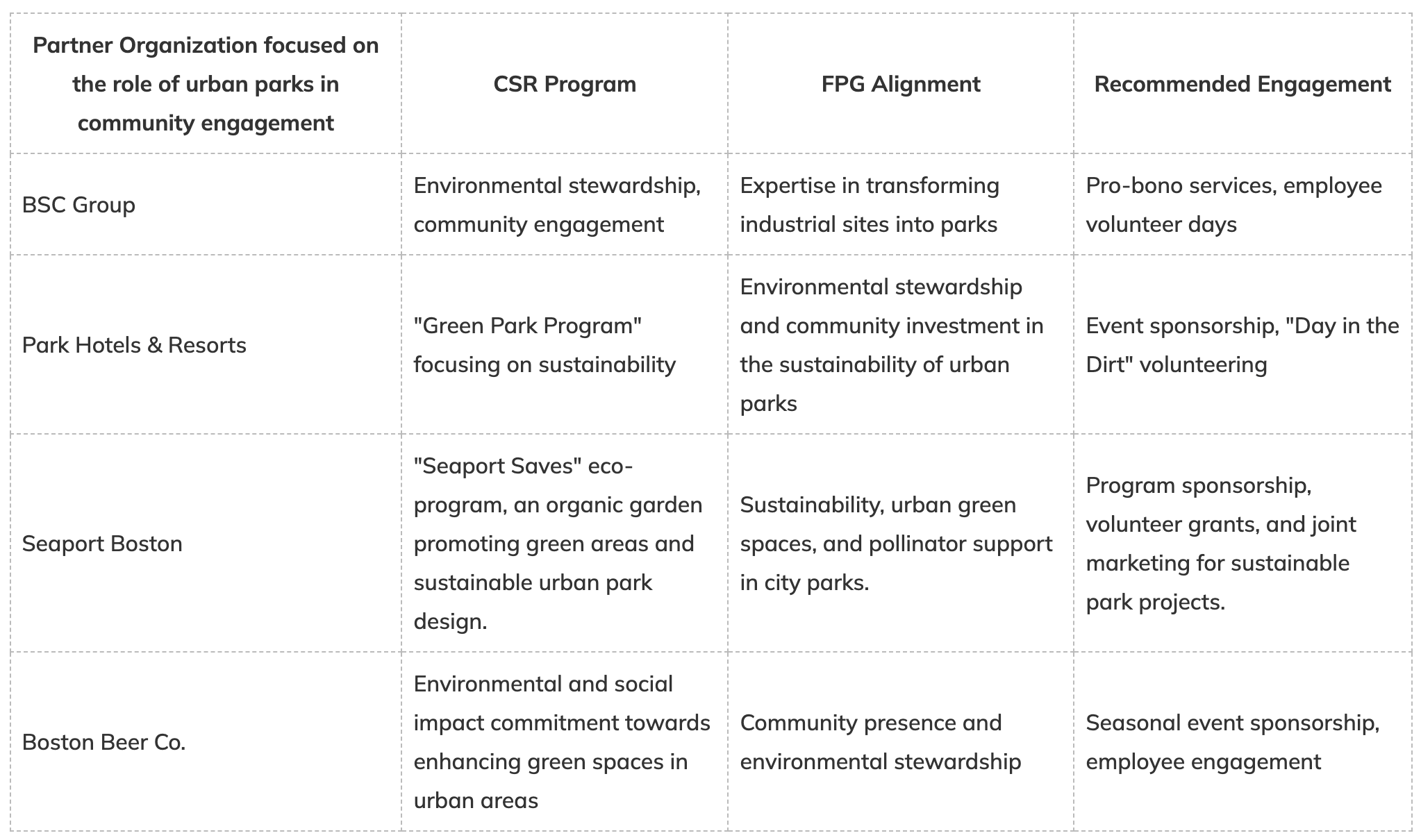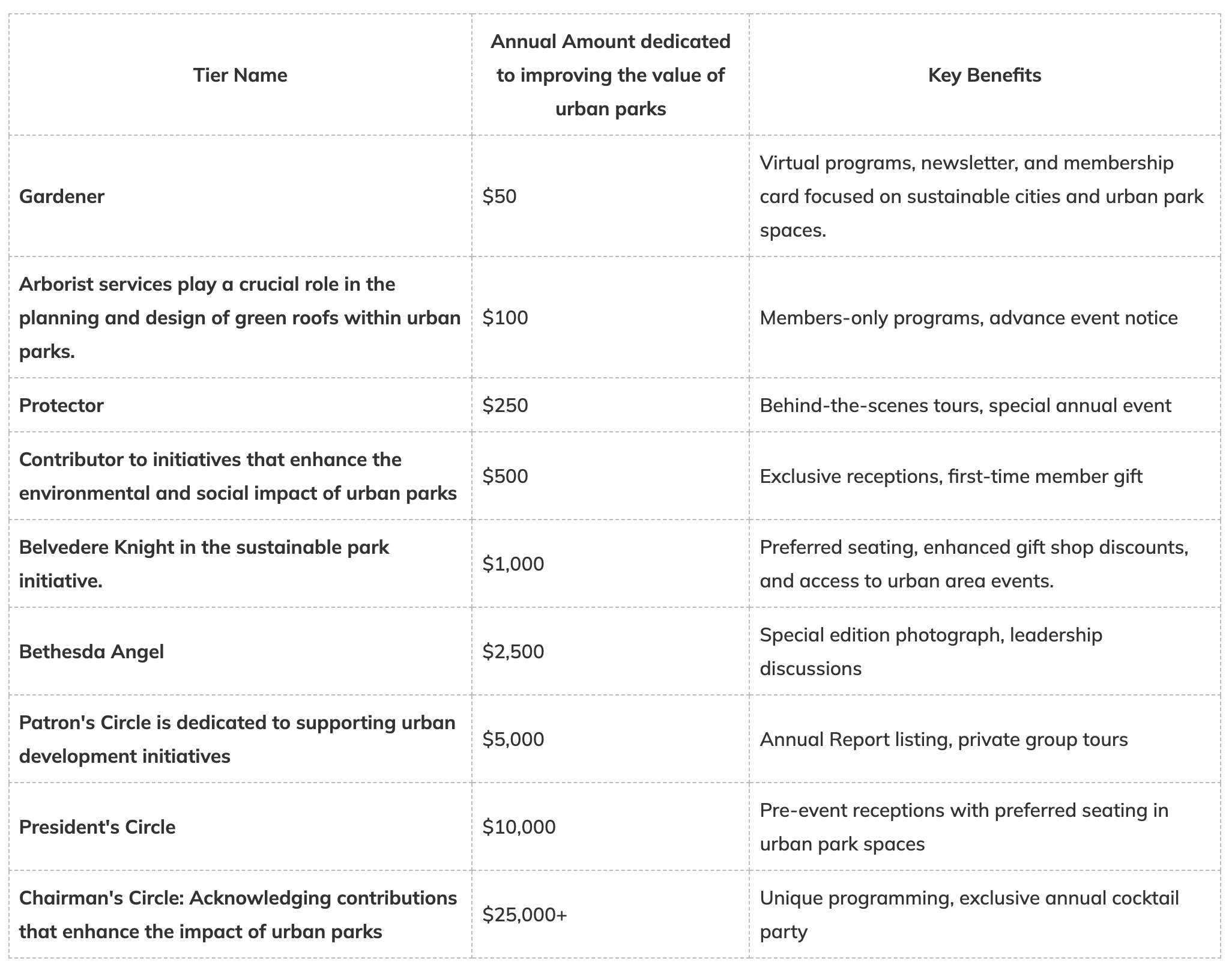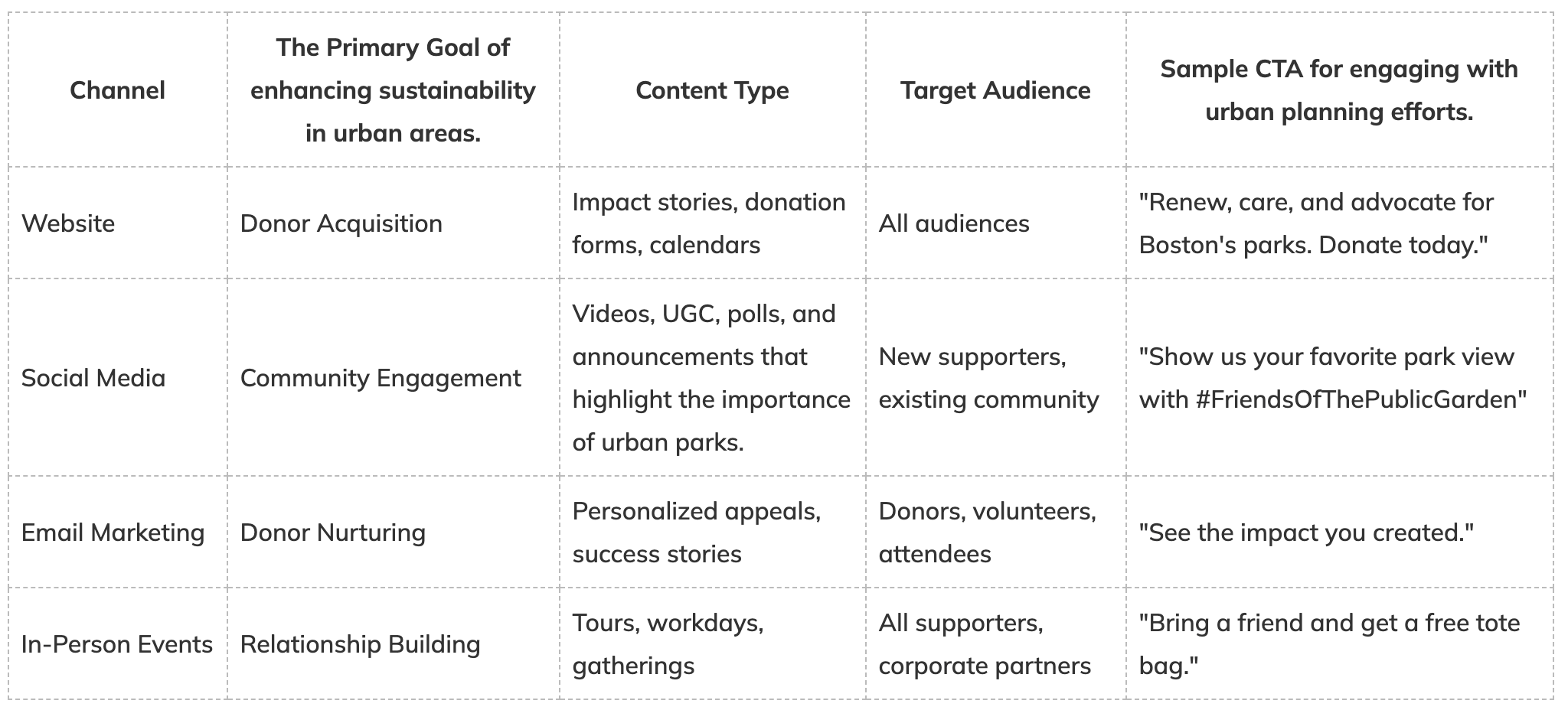Urban parks serve as the “souls of the city,” providing vital green spaces for millions of residents and visitors. Yet building a sustainable urban park conservancy that effectively balances community needs with financial stability remains one of the most challenging endeavors in nonprofit management. If you’re leading a park conservancy or considering starting one, you’re likely grappling with questions about donor acquisition, community engagement, and long-term sustainability.
The solution lies in understanding a powerful, often underestimated pipeline for financial contributions to support urban development: 42% of volunteers eventually donate to the organization they support. This statistic reveals a causal relationship that transforms time and effort into a deeper sense of ownership and commitment. By implementing a strategic framework that activates community engagement, expands supporter bases, and diversifies donor acquisition channels, your urban park conservancy can build a broad-based, inclusive, and resilient support system.
This comprehensive guide offers actionable strategies based on successful models from organizations like the Central Park Conservancy and Brooklyn Bridge Park Conservancy, providing a blueprint for sustainable growth in an evolving urban landscape.
The Urban Park Foundation: Understanding the Engagement-to-Stewardship Funnel
Why Traditional Fundraising Falls Short for Park Conservancies
Traditional nonprofit fundraising often treats volunteer engagement and donor acquisition as separate silos. This approach misses the most powerful conversion opportunity available to park conservancies. When someone dedicates their time and physical effort to raking leaves, painting a fence, or planting bulbs, they develop a profound sense of ownership and personal stake in the mission.
The Engagement-to-Stewardship Funnel illustrates a deliberate, step-by-step process of converting community members into dedicated park stewards in the context of sustainable park design:
- Top of Funnel – Community Participation: Broad engagement through seasonal events, guided tours, social media following
- Middle of Funnel – Supporters and Advocates: Active involvement through volunteering, peer-to-peer fundraising, message sharing
- Bottom of Funnel – Donors: Financial contributions through one-time gifts, recurring memberships, or major philanthropic commitments
The Volunteer-to-Donor Pathway: Your Secret Weapon for Sustainability
The key to sustainable growth in park management lies in formalizing the transition from volunteer to donor. This isn’t mere correlation—it’s a causal relationship built on psychological investment. Volunteers transform from passive consumers of public space into active contributors to its well-being.
Critical Implementation Elements:
- Personalized thank-you notes highlighting volunteer impact in the urban environment
- Special “alumni” events for long-term volunteers
- Clear pathways from hands-on involvement to financial support
- Branded merchandise and talking points for volunteer ambassadors promoting the value of urban green areas
Pillar I: Activating Community Engagement Through Enhanced Programming
Moving Beyond Events to Co-Creation: The Community-Led Co-Design Model
Traditional event-hosting represents one-way communication. A far more effective and sustainable approach adopts community-based planning where residents and stakeholders actively participate in designing and implementing urban ecosystem services. This strategic shift transforms park management from service providers into collaborators for urban green spaces.
Why Co-Design Matters in the context of sustainable urban park design and community involvement. Urban park conservancies face a critical risk: the perception that funding decisions, increasingly reliant on wealthy donors, may conflict with broader community needs. By embracing co-design, you proactively address this criticism while building a more inclusive and resilient organization.
Implementation Framework:
Phase 1: Listening Sessions
- Host small, accessible meetings at various locations and times
- Include evenings and weekends for broad representation
- Use interactive methods: photos, sketching, brainstorming lists
- Gather feedback on park beautification and new features
Phase 2: Collaborative Development, focusing on sustainable development in urban environments
- Invite community leaders to join working groups with staff focused on the use of urban green spaces
- Merge technical expertise with on-the-ground community experiences
- Create “win-win” scenarios where both professionals and residents take ownership
Expanding Programmatic Diversity and Accessibility
Broader engagement requires inclusive programming tailored to different demographics within urban planning. Research suggests focusing on specific groups like families, seniors, and youth while offering flexible participation options.
Accessibility Essentials for city parks and green infrastructure.
- Both in-person and virtual participation options
- Childcare provisions for events
- Transportation stipends to remove barriers for park visitors and enhance their experience in urban parks.
- Multiple language accommodations were needed
- Flexible timing to accommodate various schedules
Pillar II: Expanding the Supporter Base and Volunteer Advocacy
Formalizing the Volunteer-to-Ambassador Pathway
Your existing volunteer program represents a significant asset. The strategic focus must shift to creating formal pathways that nurture volunteers into long-term ambassadors equipped with tools and resources to become effective promoters.
Ambassador Program Components:
- Branded merchandise for identification and pride
- Talking points and informational materials on urban sustainability.
- Training sessions on effective advocacy
- Recognition systems for outstanding ambassadors
Cost-Effective Expansion Tactics: Incentivize peer-to-peer engagement through simple rewards that enhance the use of urban parks:
- Free branded t-shirts for volunteers who bring friends
- Special recognition for donors who invite others to events that promote the benefits of urban parks
- Leverage the trust people place in their networks over organizations
Strategic Corporate Citizenship and Employee Engagement
Corporate partnerships require nuanced, targeted approaches that go beyond simple funding requests. Transform pitches from requests into mutually beneficial partnerships by appealing to companies’ specific values and sustainability goals.
Corporate Partnership Matrix:

The “Day in the Dirt” Model: Replicate successful programs like Central Park Conservancy’s structured half-day corporate volunteering opportunities. These programs foster team-building and environmental stewardship while providing powerful incentives for higher-level corporate giving.
Pillar III: Diversifying and Scaling Donor Acquisition
Adopting a Tiered Membership and Donor Recognition Model
Move beyond basic donation pages to sophisticated tiered systems that create community and personal identity for donors. The Central Park Conservancy model demonstrates the psychological power of tangible recognition—donors aren’t making transactions; they’re joining communities with distinct identities.
Proposed FPG Membership Tiers:
Supporting the urban park system and its sustainable design initiatives

Strategic Fundraising Campaigns and Events
Diversification Strategies:
- Crowdfunding Campaigns: Clear goals, deadlines, and visual progress tracking
- Prospect Research: Wealth screening to identify major donor candidates
- Corporate Matching: Promote employer matching programs for donation amplification
Grant Opportunities:
- City of Boston’s “Small Community Grants Trust Program”
- Massachusetts Nonprofit Network resources
- Mission-aligned environmental and community development grants focused on the benefits of urban parks
Integrating Multi-Channel Digital and Communications Strategy
Building a Cohesive Digital Ecosystem
Your website serves as the central hub for all online engagement. With over half of nonprofit website traffic coming from mobile devices, mobile-first design isn’t just a preference—it’s equity and accessibility.
Website Optimization Priorities for enhancing the sustainability of urban parks:
- Mobile-responsive design with fast loading times to enhance user experience in urban development initiatives
- Clear calls-to-action guiding visitors to next steps
- Streamlined donation and volunteer signup processes
- Impact stories and community testimonials
Strategic Social Media Engagement
Move beyond static imagery to dynamic, interactive content that builds community.
Content Strategy Elements:
- Video Content: Behind-the-scenes park maintenance, volunteer testimonials showcasing the value of urban parks
- User-Generated Content: Encourage photo sharing with branded hashtags
- Interactive Tools: Polls, quizzes, live Q&A sessions for community involvement
Email Marketing and Donor Nurturing
Segmentation Strategy:
- One-time donors
- Event attendees
- Active volunteers
- Lapsed donors can be re-engaged through initiatives that emphasize the importance of urban parks.
- Corporate partners
Automation Opportunities in the management of urban sustainability initiatives, particularly in the planning and design of parks.
- Personalized welcome emails for new subscribers
- Thank-you notes referencing specific giving history
- Location-based messaging for relevant local events in urban park spaces
- Follow-up sequences for volunteer-to-donor conversion
Channel Integration Matrix: Aligning efforts with the impact of urban parks

Implementation Plan and Success Metrics
Phased Implementation Approach
Phase I (6-12 months): Laying the Foundation
- Comprehensive digital audit
- Mobile-first website redesign
- Community-led co-design pilot project focused on enhancing park features for better urban ecosystem services.
- Basic volunteer tracking systems for sustainable park projects.
Phase II (12-24 months): Building the Funnel
- Launch a tiered membership program
- Establish a formal ambassador program
- Initiate targeted corporate outreach
- Implement segmented email marketing to promote the sustainability of urban initiatives.
Phase III (24+ months): Scaling and Maturing
- Refine programs based on performance data
- Scale successful initiatives across all parks
- Expand major donor prospecting efforts to support the sustainable design of urban park systems
- Apply for larger institutional grants to support the planning and design of urban parks.
Key Performance Indicators (KPIs)
Donor-Related Metrics:
- Donor retention rate
- Average donation size for projects focused on the sustainability of urban parks
- Number of new recurring donors to support sustainable design projects in urban parks
- Campaign-specific revenue
Volunteer-Related Metrics:
- New volunteer recruitment numbers
- Total volunteer hours logged
- Volunteer-to-donor conversion percentage
Community-Related Metrics:
- Event attendance rates
- Co-design program participation
- Social media engagement rates (shares, comments, likes)
Overcoming Common Challenges in Park Conservancy Growth
Addressing the “Wealthy Donor” Perception
Urban park conservancies often face criticism about prioritizing wealthy donors over public needs. The community-led co-design model directly addresses this concern by ensuring community voices drive programming decisions, not just funding priorities.
Building Authentic Corporate Partnerships
Avoid transactional relationships by creating specific partnership plans showing companies exactly how supporting your urban forestry or park beautification programs contributes to their stated corporate social responsibility goals.
Converting Volunteers to Sustainable Donors
The 42% conversion rate isn’t automatic—it requires intentional cultivation through:
- Regular impact updates showing volunteer contribution results
- Graduated asks that respect the volunteer’s financial capacity
- Recognition programs that honor both time and financial contributions to sustainable urban park design.
- Clear pathways from hands-on involvement to financial support
Conclusion: Building Your Legacy as a Community-Driven Park Conservancy
The future of urban park conservancies lies in creating interconnected ecosystems where community participation fuels advocacy, and advocacy drives financial support. By adopting community-led co-design models, formalizing volunteer-to-advocate pathways, and implementing sophisticated donor acquisition systems, you’re not just raising funds—you’re building movements.
This strategic approach transforms community engagement from simple tactics into core organizational values, building trust and positioning your conservancy as genuinely for the people and by the people. The evidence is clear: organizations that successfully integrate these three pillars—community engagement, supporter base expansion, and diversified donor acquisition—create sustainable, resilient support systems that honor their mission while ensuring long-term viability.
Your urban parks deserve stewardship that matches their importance to community life and urban ecosystem services. By implementing these proven strategies, you’re not just maintaining green spaces—you’re cultivating the civic connections that make cities truly livable.
Ready to transform your park conservancy’s growth strategy? Start with Phase I implementation: conduct your digital audit, launch listening sessions, and begin tracking your volunteer-to-donor conversion rates. The 42% who transition from volunteers to donors are waiting for you to formalize the pathway.
FAQs: About Urban Park Conservancy Growth
Most organizations begin seeing volunteer-to-donor conversions within 12-18 months of implementing formalized pathways. The key is consistent touchpoints—volunteers need approximately 3-5 meaningful interactions beyond their initial volunteer experience before making their first donation. This includes personalized thank-you notes, impact updates showing how their work made a difference, and invitations to special “alumni” events.
You can start Phase I with as little as $5,000-$10,000 allocated primarily for digital infrastructure improvements and basic volunteer tracking systems. The community-led co-design model requires more time investment than financial resources. Many organizations successfully launch listening sessions and collaborative development programs using existing staff time and volunteer coordination.
Frame co-design as risk mitigation rather than additional bureaucracy. Organizations that skip community input often face costly project delays, public opposition, or donor backlash later. The co-design model actually accelerates long-term success by building community buy-in upfront. Present it as “investing 3 months in planning to save 18 months of conflict resolution.”
Absolutely. Even with 10-15 regular volunteers, you can achieve meaningful growth. Small volunteer bases often have higher conversion rates because relationships are more personal. Focus on the peer-to-peer expansion tactics—offer incentives for volunteers to bring friends, and each existing volunteer who brings two new people effectively doubles your base within a year.
Don’t compete on size—compete on alignment and impact per dollar. Smaller conservancies can offer more personalized partnerships, direct community impact, and intimate volunteer experiences that large organizations can’t match. Emphasize your local roots, community connections, and the ability to make a meaningful difference with smaller investments.
The 42% statistic comes from broad nonprofit research, but park conservancies often see even higher rates due to the emotional connection people develop with specific places. However, this conversion isn’t automatic—it requires intentional cultivation. Organizations that simply hope volunteers will donate without formal pathways typically see rates closer to 15-20%.
This is exactly why the community-led co-design model is crucial. Gentrification concerns arise when communities feel excluded from decision-making. By making community voices central to your planning process, you transform potential opposition into partnership. Share decision-making power, not just communication about decisions already made.
Treating donors as ATMs rather than community members. The biggest mistake is asking for money before building relationships. Successful conservancies understand that people don’t donate to organizations—they donate to causes they feel personally connected to. Focus on creating emotional investment through hands-on involvement before making financial asks.
Track leading indicators that predict future donations: volunteer retention rates, event attendance growth, social media engagement, and email open rates. Community members who attend 3+ events are 5x more likely to become donors within two years. Engagement activities aren’t costs—they’re investments in your donor pipeline.
Yes, but adjust your tier structure accordingly. Lower-income communities often have higher volunteerism rates and stronger social networks. Focus on building large numbers of smaller donors ($25-$100) rather than chasing major gifts. Many successful conservancies in diverse neighborhoods raise significant funds through community-based crowdfunding and local business partnerships.
Create clear partnership guidelines that align corporate involvement with community benefit. Avoid partnerships where corporate branding overshadows community needs. The most successful corporate partnerships involve companies contributing resources (volunteer time, expertise, materials) alongside funding. Always maintain community voice in decision-making, even with major corporate partners.
Start with board education on the engagement-to-stewardship funnel concept. Many board members are more comfortable with friend-raising than fund-raising. Train them to invite people to volunteer events and community gatherings first. Once board members see how community engagement naturally leads to financial support, they become more confident in donor cultivation conversations.
This comprehensive guide offers actionable strategies based on successful models from organizations like the Central Park Conservancy and Brooklyn Bridge Park Conservancy, providing a blueprint for sustainable growth in an evolving urban landscape.

